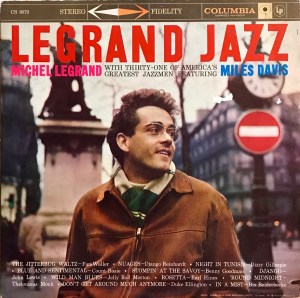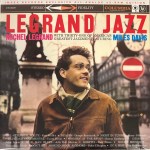More of the Music of Michel Legrand
Hot Stamper Pressings of Large Group Jazz Recordings Available Now

- Legrand Jazz returns to the site for the first time in close to ten years, with STUNNING Shootout Winning Triple Plus (A+++) throughout this vintage 6-Eye Stereo pressing – fairly quiet vinyl too
- Both of these sides are open and spacious with real depth to the soundfield and lots of separation between the various instruments, a very important quality for a recording of a large ensemble recording such as this
- Rich, solid bass; you-are-there immediacy; energy and drive; instruments that are positively jumping out of the speakers – add it all up and you can see that this copy had the sound we were looking for
- Legrand rounded up 31 of the greatest jazz players of the 50s, divided them up into three groups, and the result was a landmark recording with audiophile sound to die for
- We’re talking jazz giants: John Coltrane, Miles Davis, Bill Evans, Ben Webster, Herbie Mann, Art Farmer, Donald Byrd, Phil Woods — everybody who was anybody is on this record
- 4 1/2 stars: “Throughout this superlative album, the arrangements are colorful and unusual, making one wish that Legrand had recorded more jazz albums through the years.”
- Robert Brook recently played the “award winning” Impex 45 RPM pressing from 2019 (as did we) and wants to know what you made of the sound
This album is more common in mono than stereo, but we found the sound of the mono pressing we played seriously wanting. It’s dramatically smaller and more squawky and crude than even the worst of the stereo pressings we played.
We had a copy we liked years ago, but that was years ago. We don’t have that copy anymore and we don’t have a stereo that sounds the way our old one did either.
The unique voices of each of the jazz giants featured on this landmark recording contributes memorable solos then receeds into the group to provide the structure for the rest of the music. Which is an awkward way of saying everybody does his thing in service to the song and then gets out of the way. “The Jitterbug Waltz,” which opens up side one, is a perfect example: the arrangement is completely original, and within its structure, Miles Davis, Phil Woods, John Coltrane and others solo beautifully, each taking a turn at the melody. If three minutes into this song you don’t like what you’re hearing, jazz is just not for you.
 Robert Brook has a blog which he calls
Robert Brook has a blog which he calls

